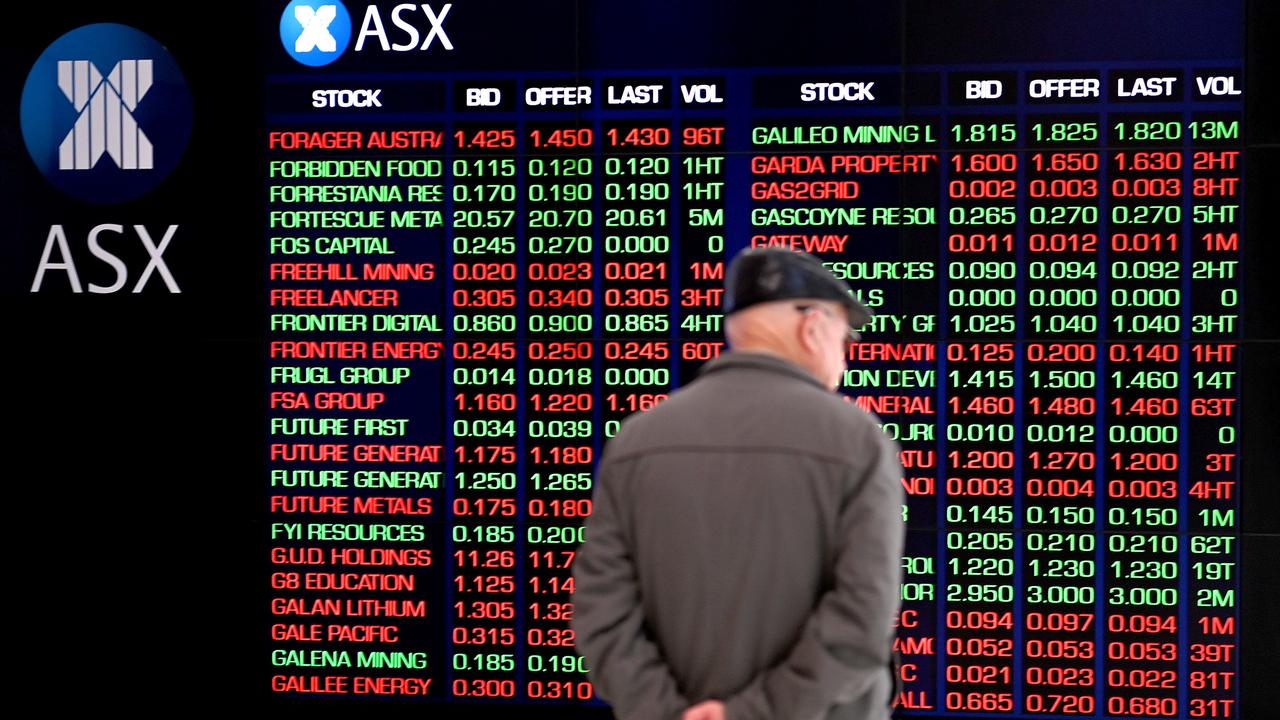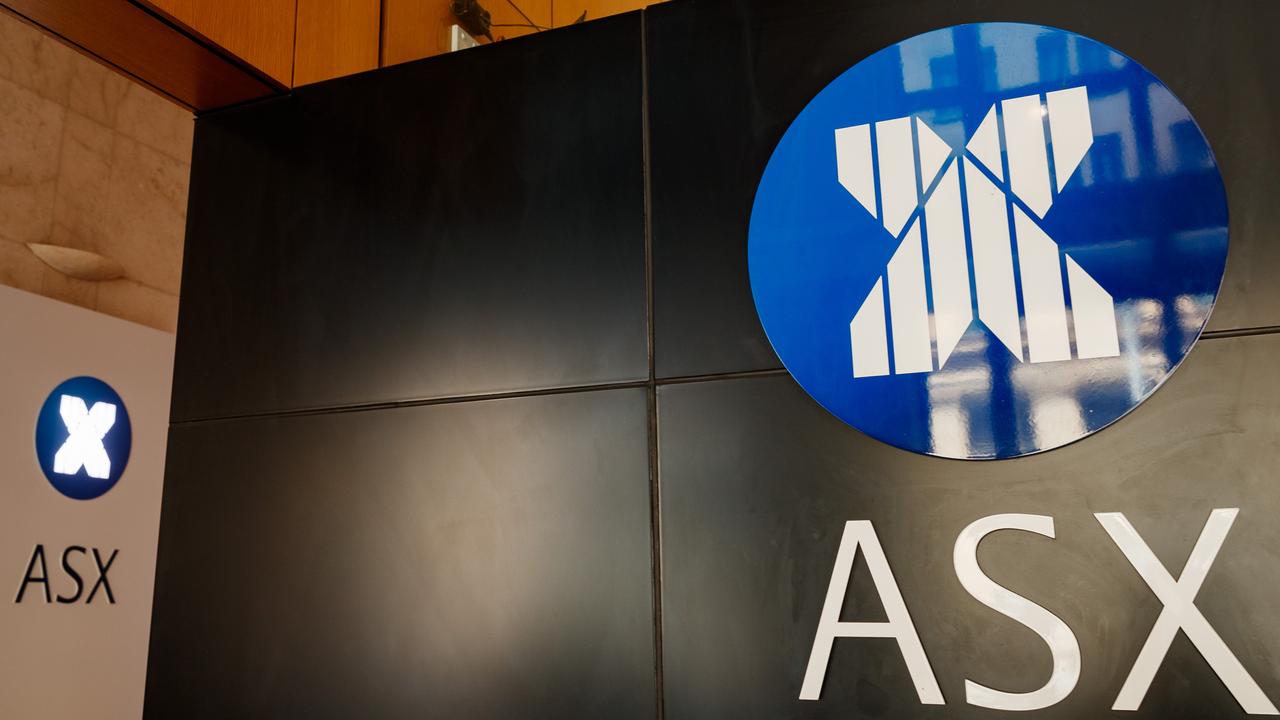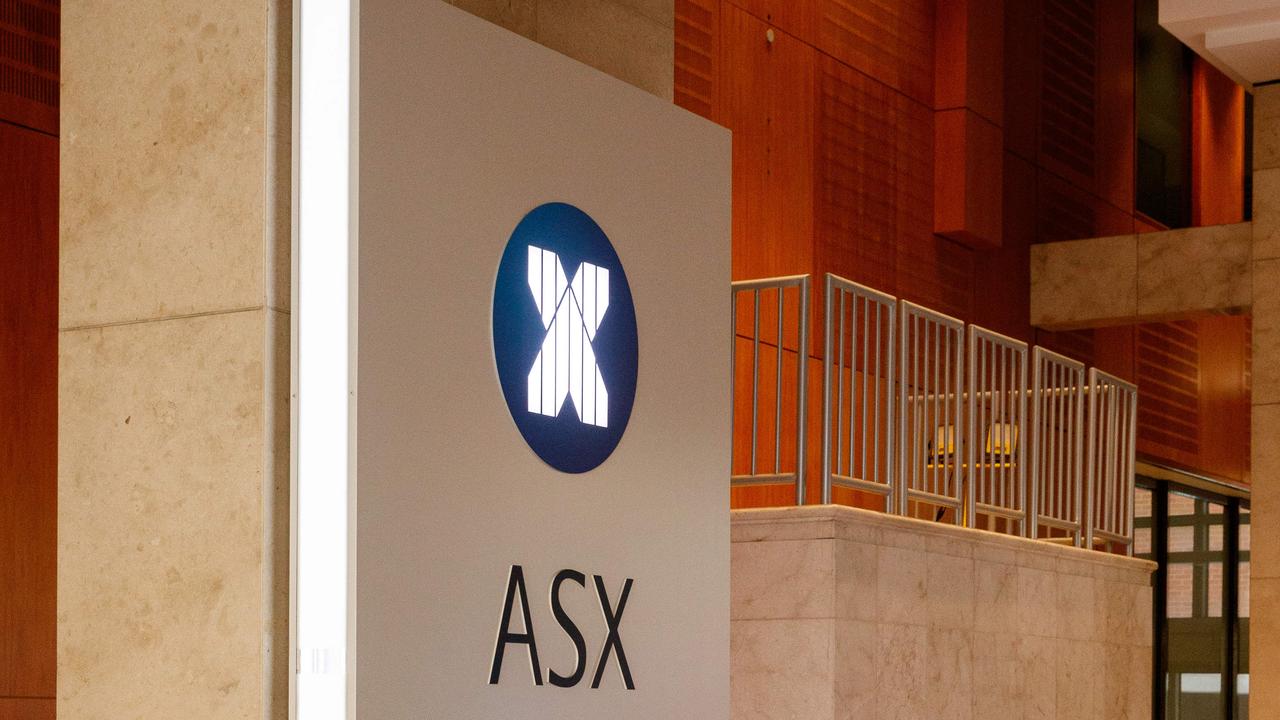Trump rally: Dow Jones holds above record 20,000, but experts warn of ‘nasty pullback’
IT TURNS out the experts were wrong, once again. Donald Trump has defied his critics, and this graph proves it.
OPTIMISM about the business-friendly policies of Donald Trump has boosted US stocks to record highs, but experts warn there could be a “nasty pullback” on the way.
The Dow Jones Industrial Average, which tracks 30 major industrial companies, soared past 20,000 points for the first time ever on Wednesday, largely off the back of Goldman Sachs, Boeing and IBM.
The stock market rally since Trump pulled off his shock election win in November has defied economists’ pre-election predictions of five, 10 or even 15 per cent falls in US and global markets.
US stocks have instead risen around 8 per cent, and the Dow Jones more than 10 per cent, with Trump’s policies — which include personal and company tax cuts, infrastructure spending and deregulation — spurring investor confidence.
“What keeps this rally and widens it is continuous signals that the Trump administration is moving on deregulation, on tax reform and on infrastructure. And that is the fuel for the rally — it has been and will continue to be,” Mohamed El-Erian, chief economic adviser at Allianz, told Fox News.
AMP Capital chief economist Dr Shane Oliver said while the Dow hitting 20,000 “may generate a bit of excitement”, it was “just an arbitrary round number”. “Good earnings, breadth and growth indicators are more important,” he tweeted.
Speaking to Sky News, Dr Oliver said while many people “take fright” at Trump, investors weren’t. “He’s talking about lower taxes, he’s talking about deregulation — he’s approving the Keystone XL pipeline, that means jobs — those sorts of things have a sort of Reagan-esque element to them, supply-side economics,” Dr Oliver said.
“[But] a lot of people say everything is Donald, and that’s why we’ve seen this rally. But if you look right around the world, business conditions have improved. The PMIs, purchasing managers indicators [which indicate] business confidence, in Europe they’re running around five-and-a-half, six-year highs.”
Wall Street was fairly flat on Thursday but the Dow Jones held above the historic 20,000 mark for the second day. The broader S&P 500 index shed 0.1 per cent, while the tech-focused Nasdaq also fell slightly.
“The market is probably taking a breather after yesterday,” Bill Lynch, director of investment at Hinsdale Associates, told AFP.
Early fourth-quarter US corporate earnings have boosted sentiment and are expected to show growth of seven per cent, their biggest increase in two years, according to Thomson Reuters data.
“If all the economic data is good, if the earnings are good and the market doesn’t really seem to think anything [Trump] says or does is negative, I don’t see any downside,” Randy Frederick, vice president of trading and derivatives for Charles Schwab, told Reuters.
But while the VIX Index, also known as the “fear index”, has fallen to its lowest level in two-and-a-half years, one top Wall Street strategist is warning of a looming pullback of between 4 to 7 per cent.
Tony Dwyer, senior managing director and chief market strategist at Canaccord Genuity, said heightened investor optimism, record low levels of implied volatility and a high percentage of S&P 500 stocks trading above their moving averages should sound warning bells.
“So it’s kind of a combination of all these things that creates an environment that’s ripe for just kind of a nasty little pullback,” Dwyer told CNBC. “It’s just a market that’s ripe for an out-of-nowhere kind of news item that talking heads like me can’t predict.”
Financial commentator Peter Switzer argues that the “Trump phenomenon has been built on ‘expect the unexpected’, so despite US stocks being up 8 per cent and the Dow up over 10 per cent, this rally could easily surprise to go higher”.
“[But my] educated guess is that a sell off is very possible in February or March,” he wrote. “However, as long as economic and company profit readings are positive, which I expect, and Donald Trump makes policy decisions that are better than his tweets, then any market sell off will be a good time to buy stocks.”
HOW DID THE DOW GET TO 20,000?
Associated Press
Dow 20,000 wasn’t exactly a team effort. The index climbed to the 20,000 mark from 19,000 largely because of three stocks: financial firm Goldman Sachs, aerospace giant Boeing, and technology and consulting company IBM. Put together, those three companies are responsible for almost half the gain that brought the blue chip index to its latest millennial mark on Wednesday. It took the Dow just two months to go from 19,000 to 20,000, one of its quickest moves between round number milestones.
The big jumps for Goldman, Boeing and IBM reflect the fact that investors expect financial firms and industrial companies to do very well. They’re so optimistic that they’re buying some very expensive stocks, as they are betting that the companies will reap large gains if economic growth picks up and the Trump administration cuts regulations that might keep their profits in check. The Dow had looked like it was going to blow past the 20,000 mark in the middle of December. It stopped tantalisingly close to that mark, in large part because a big rally in Goldman stock ended. Goldman led the index rapidly higher after the election and came close to an all-time high, but it’s trading a little lower today than it was a few weeks ago.
It’s worth noting that Goldman is the most expensive Dow stock by a wide margin and IBM is the next-most costly. That matters because the Dow is weighted by stock price. When Goldman Sachs moves from $US200 to $US201, or one half of one per cent, that counts exactly as much as Cisco rising from $US30 to $US31, which would boost that company’s stock price by more than three per cent. Other indexes like the S&P 500 and the Nasdaq don’t work that way. They’re weighted by the market value of a company, and many investors feel that makes those indexes a better reflection of the broader market. Despite the huge gains the index has made in the last few months, some Dow stocks aren’t doing that well. Wal-Mart, which has lost the equivalent of about 20 Dow points since November 22, is doing the worst. Six other components are down, and a few others haven’t moved much.
The stocks in the Dow are more expensive than some of their peers, but they’re also less risky: while a small company in the Russell 2000 index might bring home bigger gains than a Dow component, as they did in the aftermath of the election, those companies are also more likely to suffer big setbacks or fail altogether.




